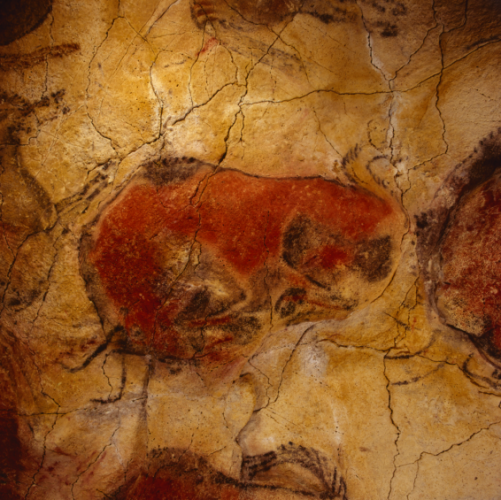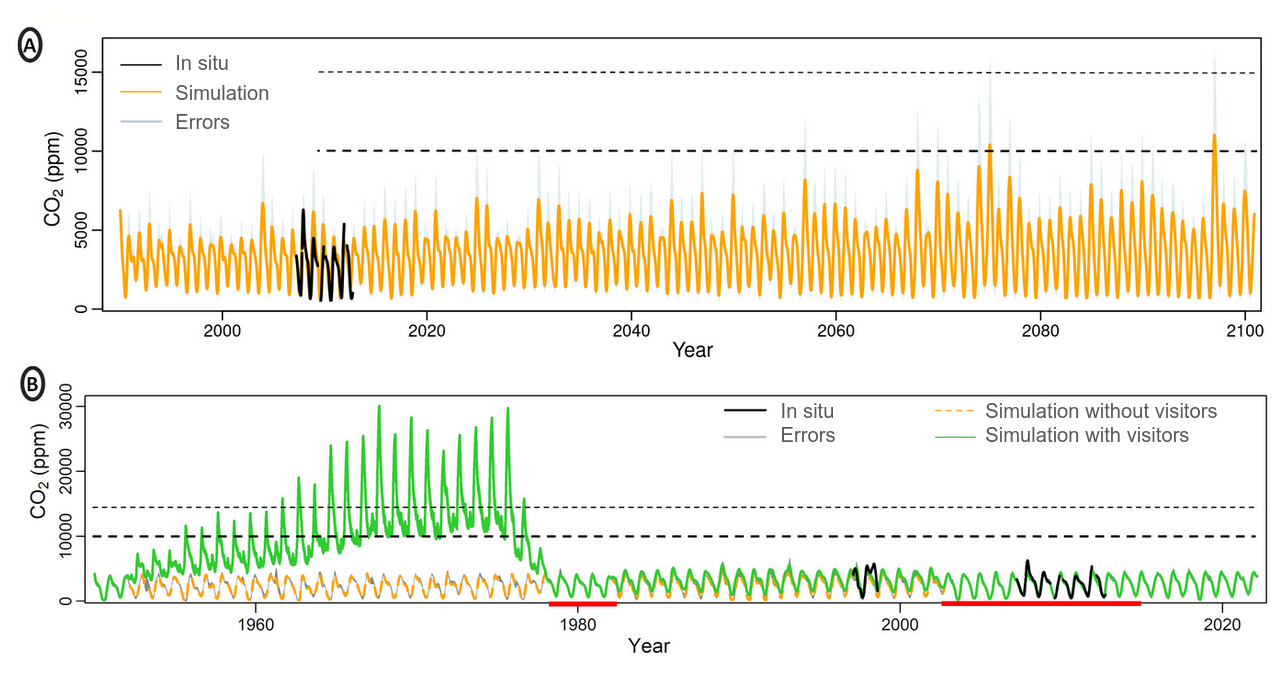
© Museum of Altamira and Cave of Altamira, Spanish Ministry of Culture and Sport. Photographer P Saura
Tracking the cave atmosphere from space: this is the challenge taken up by a Franco-Hispanic team of researchers working on the Altamira site in Spain, a UNESCO World Heritage Site. The method used is based on chaos theory. Using satellite observations, it made it possible to determine the equations driving the CO2 concentration inside the cave, a key factor for the conservation of the paintings. Scenarios for the evolution of the cave’s atmosphere were then played out from the early 1950s to 2100. They highlight the risk to the paintings, which is likely to become problematic before the end of the century.
Cave paintings are particularly sensitive to the air properties within the cave. In particular, the concentration of CO2 plays an important role in the development of micro-organisms that lead to the deterioration of the pigments. Being able to monitor its concentration in the Altamira cave is essential for assessing the risk to the paintings, in a place still open (in a very limited way) to visitors.
Installing CO2 sensors in a cave over a long period of time is complicated, due to the humidity inherent to these environments. In the case of Altamira, in-situ measurements were carried out between 2007 and 2013, which is too short to use artificial intelligence to simulate the behaviour of the cave over other years. Instead, an innovative method based on chaos theory and developed at CESBIO was used. It considers the soil moisture and the temperature outside the cave as forcing elements on the CO2 concentration. Based on chaos theory, this approach made it possible to obtain an algebraic formulation of the dynamics of the cave atmosphere, directly linking outside temperature, soil moisture and CO2 concentration. Past and future simulations were then carried out :

Evolution of the CO2 concentration in the Altamira cave in the future (A) according to IPCC scenario A2 (which predicts a global temperature increase of +3.5°C by the end of the century); and in the past (B) for different visitor attendance regimes. In the years 1978-1982 and 2002-2014 (in red), the cave was closed to visitors due to excessive CO2 concentrations threatening the paintings. For the future scenario, data reveal that CO2 levels that led to the cave’s closure in the past could be reached again before the end of the century (even in a context of reduced visits), highlighting the risk on Altamira’s paintings. For past scenarios, they provide an estimate of CO2 levels reached since 1950, based on the number of visitors.
This study shows that it is possible to monitor CO2 concentration in the Altamira cave with satellite data. The equations obtained are specific to Altamira and concern this gas in particular, but the method is generic and opens up prospects for other caves whose paintings are also threatened. Other issues, such as carbon sequestration in soils and the hydrogeology of karst springs, could be tackled using similar approaches. More information in the newly published article : here !
